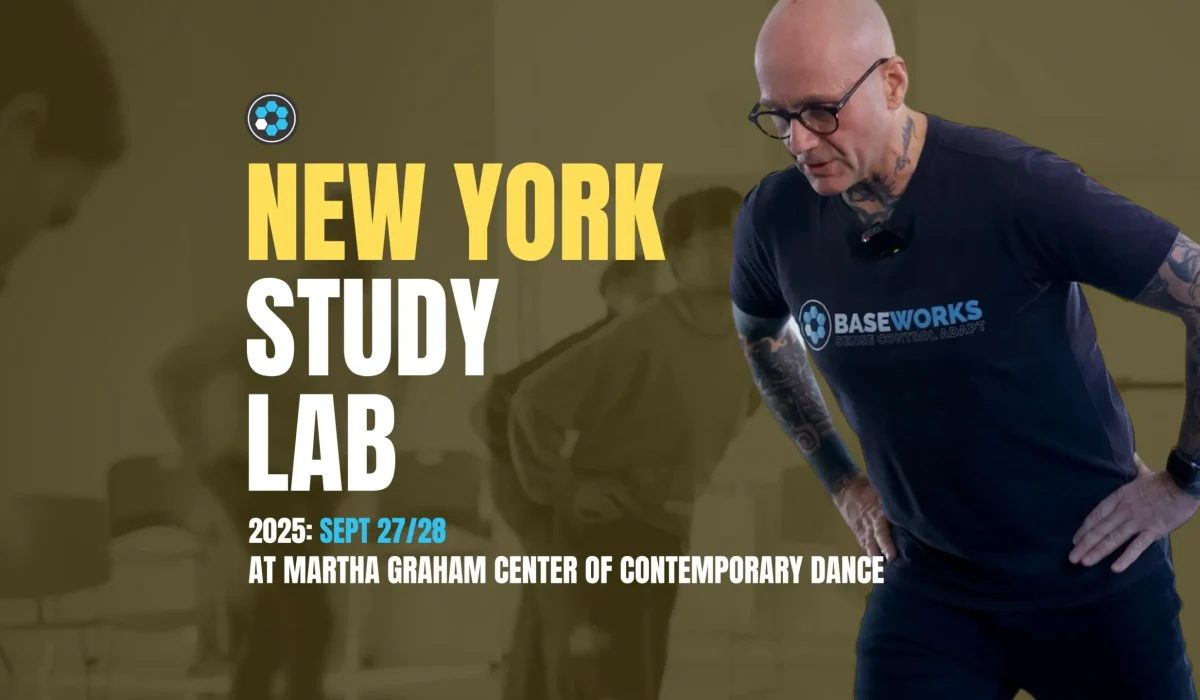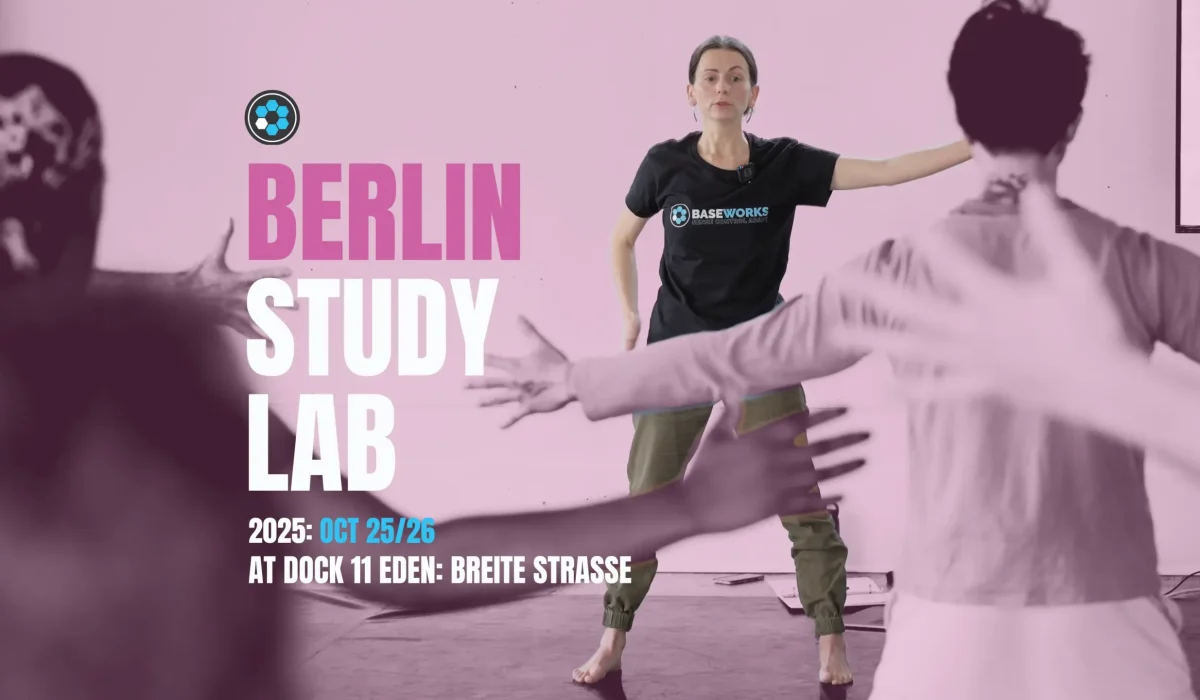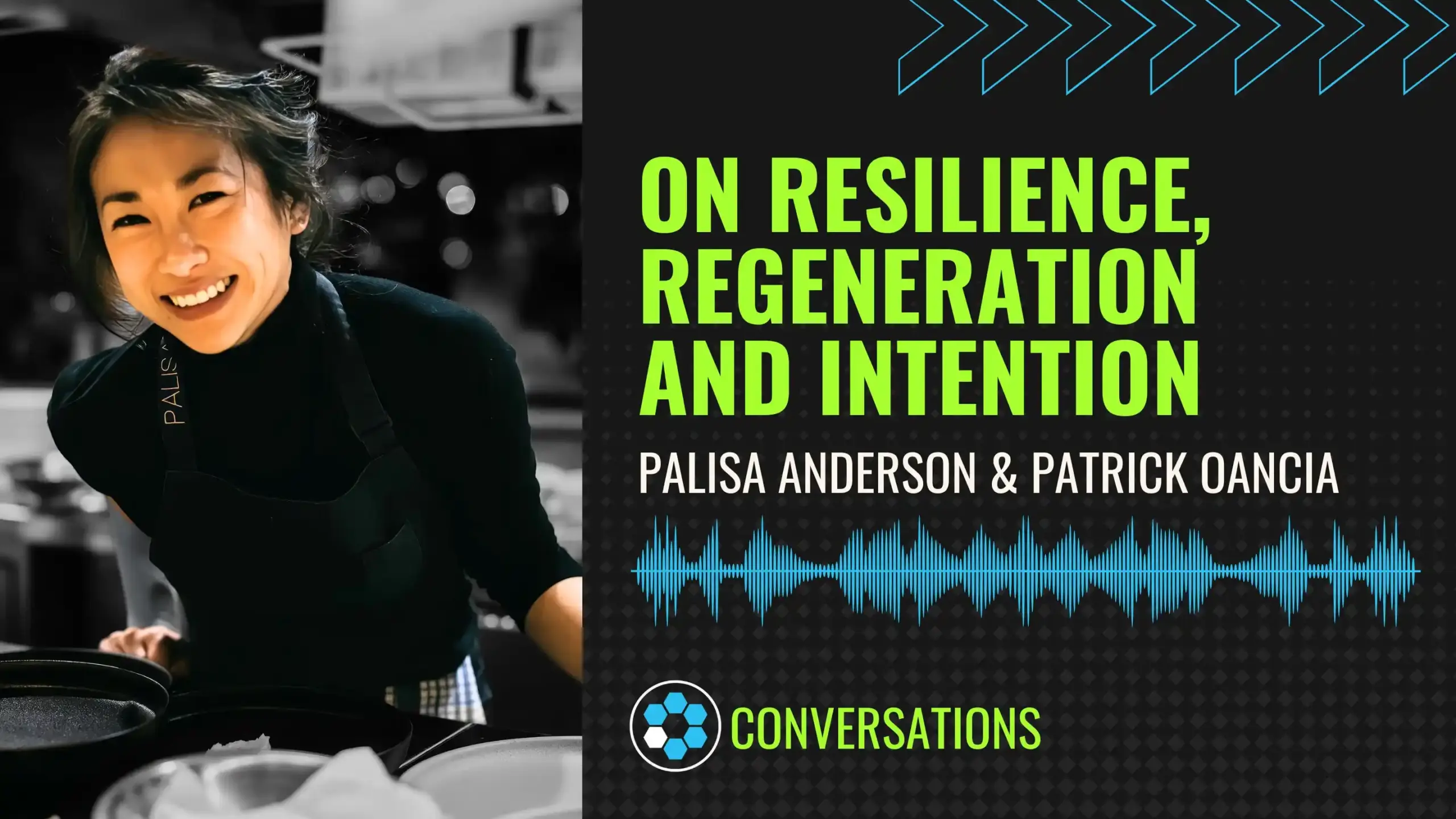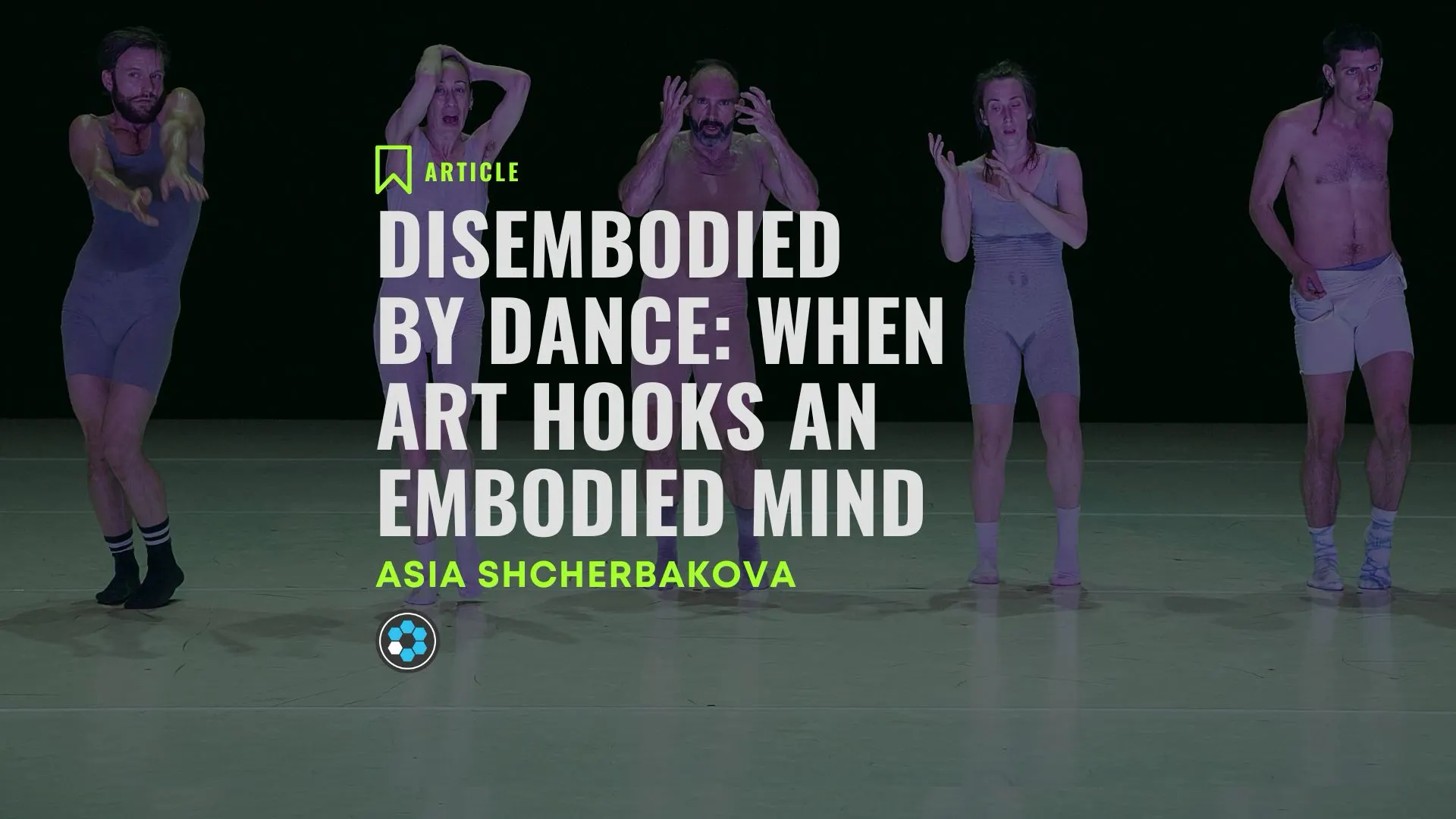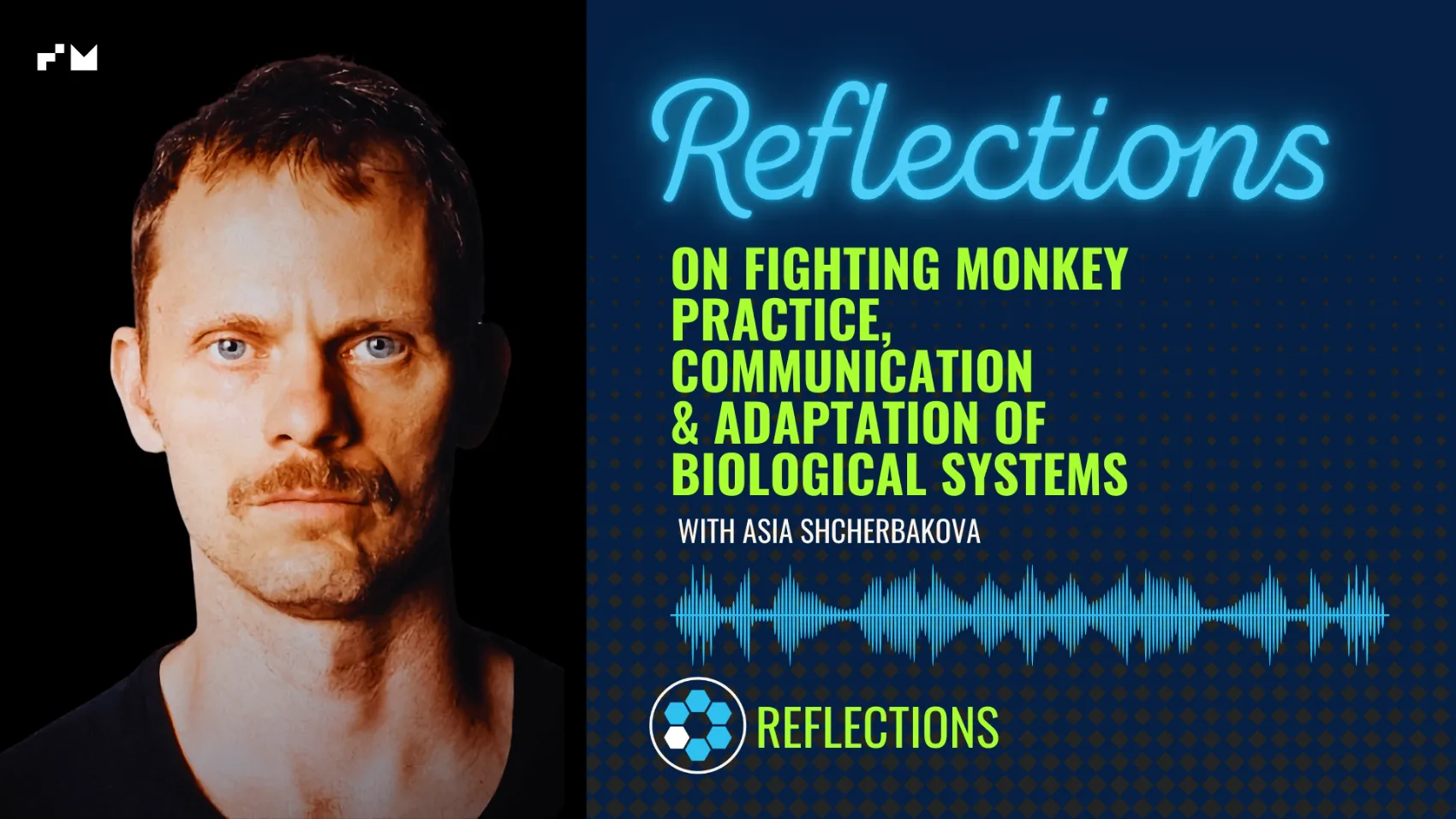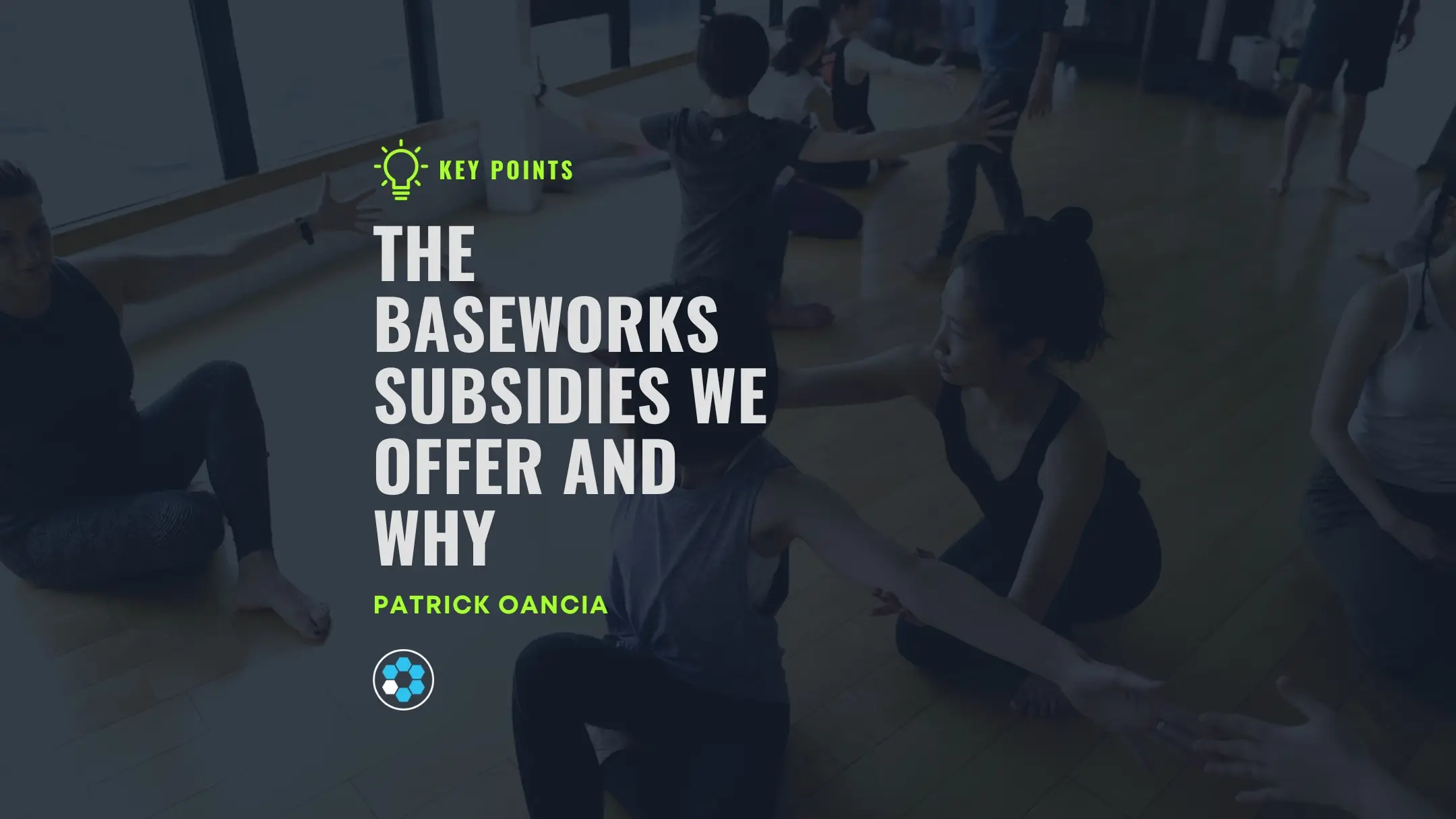Although we are obviously consciously aware of the position of our body parts in space, it is often assumed that the signals from our muscles and joints that provide the input for the brain to calculate the positional information do not reach our conscious awareness. We can feel the touch on our skin – yes. But apparently, according to mainstream neuroscience, we cannot feel “tactile” sensations in our muscles (apart from pain and tension). But is it really true? Have you really never ever felt any neutral or pleasant sensations in your muscles? This article explores the topic of “proprioceptive awareness” as a dimension of “body awareness”, its potential neural substrate, its utility and intrinsic reward value. Also, please fill in the MUSCLE ACTIVATION SENSATION QUESTIONNAIRE at the bottom of the article!
Introduction
If I were asked to make a list of beneficial effects of physical exercise in order of importance, my list would start like this:
- Developing perceptual skills of being able to be constantly aware of the sensations in the muscles and of the positions of multiple points on the surface and inside the body.
- [other benefits]
Any other benefits like being in shape, being healthy, feeling great, being productive and so on seem to naturally follow from #1. However, my #1 rarely makes it to any such lists. For example, the CDC’s official infographic about the benefits of exercise and physical activity for adults lists health outcomes rather than perceptual skills.
A commonly recognized category/keyword which overlaps with my #1 is “body awareness.” There’s quite a bit written about “the benefits of body awareness”. However, the term is used inconsistently and a clear definition is rarely provided. It may refer to a range of things – from kinesthesis to Graig’s Interoception, or even to something close to Ellen Langer’s Mindfulness.
Yet, my #1 refers to neither of these things. In our framework, it refers to a combination of what we call “proprioceptive awareness” and “spatial awareness.” This article will focus only on “proprioceptive awareness.” However, because no common definition of “body awareness” exists yet, first of all, I’d like to introduce our own framework for talking about “body awareness”.
Body awareness is a complex, multi-dimensional construct in need of more nuanced conceptualization.
A clear definition is rarely provided.
The 3 Types of Body Awareness
In Baseworks, from a practical/pedagogical standpoint, we find it useful to distinguish among 3 ‘types’ or ‘dimensions’ of body awareness.
These 3 types of body awareness are as follows:
- Interoceptive awareness
- Proprioceptive awareness
- Spatial Awareness
Interoceptive awareness is the conscious awareness of sensation related to the internal organ functioning, stress, emotions, and metabolic changes. Our notion of interoceptive awareness is mostly in agreement with Craig’s ideas of interoception.
The following two types are more distinct, and it would be difficult to match them precisely with a pre-existing framework or category.
Spatial awareness, in our framework, on the most superficial level, refers to the ability to feel the position of the body parts in space without visual input (aka kinesthetic localization). In addition to this, in our framework, the category of spatial awareness is also related to the ability to use a mental model of space to map it onto the external environment to solve mental and physical tasks. It also includes skills or activities of mapping external objects and spatial relations onto the body for various purposes (mnemonic, aesthetic, exploratory, recreational or otherwise). Awareness of space is related to spatial cognition, spatial working memory and so forth. It is related to my #1 but I’m not going to talk about it in this article.
Finally,
Proprioceptive awareness, in our framework, is the conscious awareness of the signals from the mechanoreceptors of the muscular-skeletal system (as opposed to the skin) experienced as sensations.
This classification is very much application/task-based, and sometimes it would be unclear how to classify a particular sensation.
For example, when I am aware of my heartbeat (as in: having a pulsing sensation somewhere in my body without touching the skin with my fingertips), is it interoceptive or proprioceptive awareness? Although large blood vessels are equipped with mechanoreceptors, according to Wilfrid Jänig (my go-to source when it comes to the autonomic nervous system), their stimulation does not seem to give rise to conscious sensations. So, perhaps, the sensation of the heartbeat is actually picked up by the skin.
Or, if I am aware of the peristalsis in my transverse colon (you know, the slow rhythmical contractions of the part of the large intestine that lies just above the belly button — coincidently, or not so coincidentally, the spot where I used to get my first needle whenever I visited an acupuncturist in Tokyo), should it be considered interoceptive or proprioceptive awareness?
Although sometimes we don’t have a clear answer, this framework still serves the needs of our teaching applications and research. Also, it is well suited for discussing “body awareness” because it solves 2 common problems:
- Mixing unrelated phenomena together (example: “body awareness is the awareness of the body position in space, but it also includes our awareness of being hungry”)
- Failing to notice certain phenomena because they ambiguously fall on the overlap between existing categories (example: “proprioception occurs beyond our awareness”)
Proprioceptive Awareness, Really?
The term ‘proprioception’ has a wide range of meanings. Neuroscientists, for example, may treat somatic proprioception as an entirely subpersonal, nonconscious function.
– Shaun Gallagher
(philosopher known for his work on embodied cognition,
social cognition, agency,
and the philosophy of psychopathology)
I know, ‘Proprioceptive awareness’ defined as conscious sensations may raise quite a few eyebrows.
Sure, our brain must be able to obtain the information about the length and the force in the muscles in order to compute proper motor commands. And yes, we can consciously tell where our body parts are in space even with our eyes closed. But can this be consciously perceived as a localizable sensation? (For example: pain or touch are localizable sensations. When your finger hurts or somebody touches your finger, you can tell that the sensation is in the finger and not in your neck or your stomach.) The textbooks usually say it can not – that proprioception occurs without conscious awareness.
Moreover, proprioception, as a muscle/tendon receptor-based sense, is usually contrasted with the tactile sense associated with the skin receptors, – which can give rise to (and at least, thankfully, nobody argues about that) consciously perceived sensations. This picture leaves essentially no place for sensations in the muscles beyond pain and soreness (we are not considering pain and soreness because these belong to the domain of interoceptive awareness).
The scientific literature on “body awareness” has been primarily concerned with interoceptive awareness. As you can see in this review article, which has screened through all the body awareness assessment tools available in 2009, the proprioceptive dimension only ever comes up as a metric of psychological stress such as “sensations of distress, worry, pain and tension (e.g. ‘‘I am aware of tension in my muscles’’)”.
But think about it – have you really never ever felt any sensations in your muscles beyond pain and soreness?
The main purpose of this article is to bring attention to the topic of conscious sensations originating from the muscular-skeletal system (primarily in the muscles) and to suggest a possible resolution to a seeming contradiction between the subjective experience and this textbook idea that proprioception is not accompanied by conscious localizable sensations.
The following diagram summarizes what this article is about: this black hole, the blind spot, the void in the otherwise very regular system of how we generally think about interoception, proprioception and exteroception.
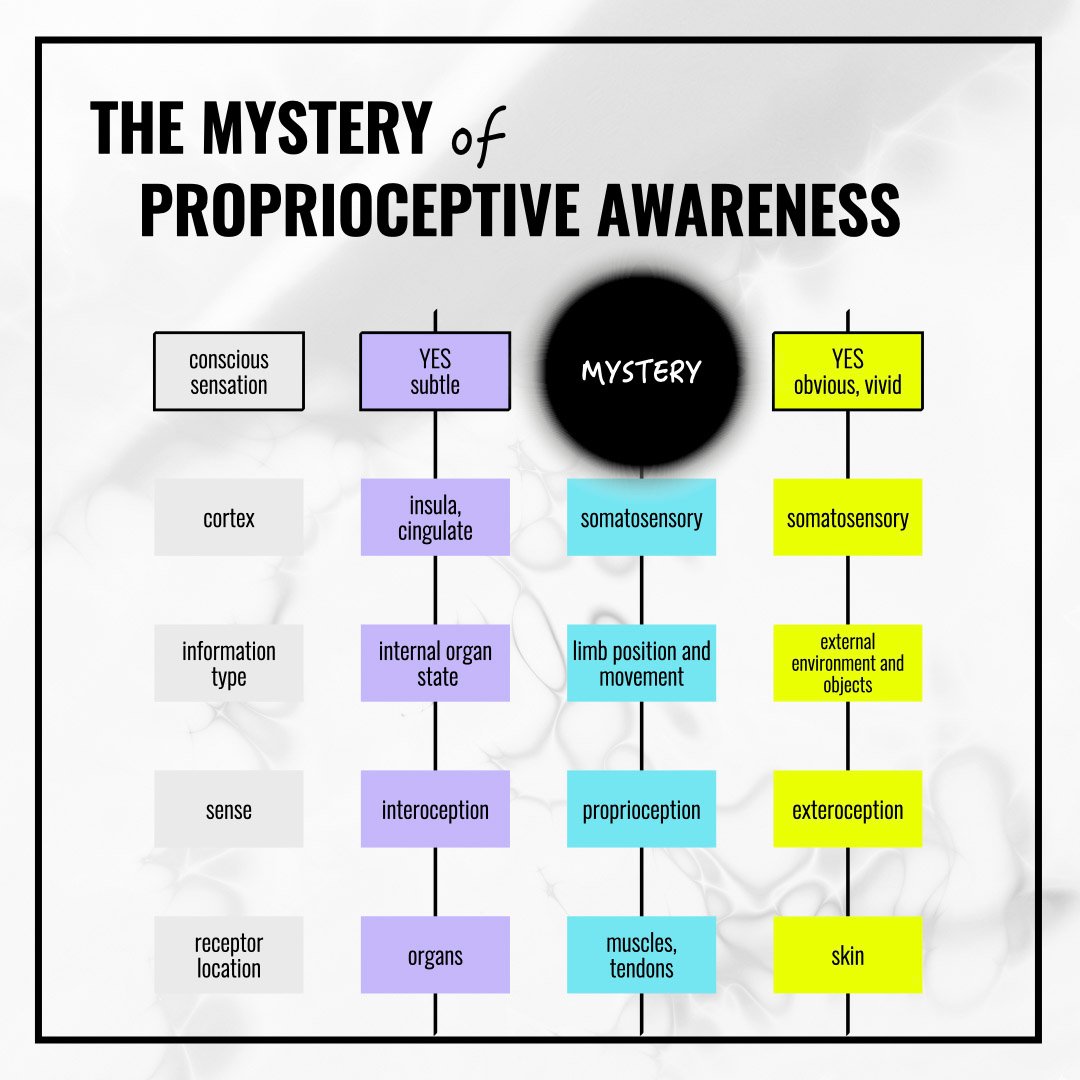
Where are the muscle-associated sensations in the brain?
(Note: if you are really bored by biological details, jump to the next section.)
There are 6 pathways that transmit somatosensory information from mechanoreceptors to various parts of the brain. Out of these 6, only 2 are cortical (if a pathway reaches the cortex – there is a good chance it contributes to something that we can be consciously aware of). These 2 are:
- Dorsal-column-medial lemniscus pathway (DCML)
- Spinothalamic pathway (ST)
Out of these 2, only the DCML pathway is “direct” – it mostly collects the information directly from the sensory neurons, whereas the ST pathway collects the information from the spinal interneurons. And more importantly, while both pathways collect the information from the skin receptors, the DCML pathway is the main pathway to collect information from the muscles and joints.
The DCML projects to the primary somatosensory cortex (the one famously known for containing a map of “sensory homunculus” – see more about it below), whereas the ST pathway mostly projects to other cortical areas such as the insula, cingulate cortex, secondary somatosensory cortex (areas associated with interoception).
So, let’s take a closer look at the DCML, because if there is any chance for us to be consciously aware of any localizable sensations in our muscles, the DCML must be our pathway. If you look at the diagram of the DCML you can see that the mechanoreceptors are just 3 synapses away from the somatosensory cortex. Just from this design alone, how strange would it be if we couldn’t be aware of any sensations in our muscles?!

I guess anybody interested in the topic of “body awareness” must have seen the cartoons of the sensory homunculus and the motor homunculus (which look like a deformed person laid over a strip of brain cortex) – the graphic representation of a sensory and a motor map discovered by a Canadian neurosurgeon Wilder Penfield by poking brains of his epileptic patients with electrodes during open-brain surgery.
In less technical sources, these “two maps” are usually conceptualized in the following manner: the motor map is seen as the output area connected to the muscles, while the sensory map is seen as the input area, which collects information from the skin. This introductory framework does not tell us anything about the sensations in the muscles, so let’s dig deeper.
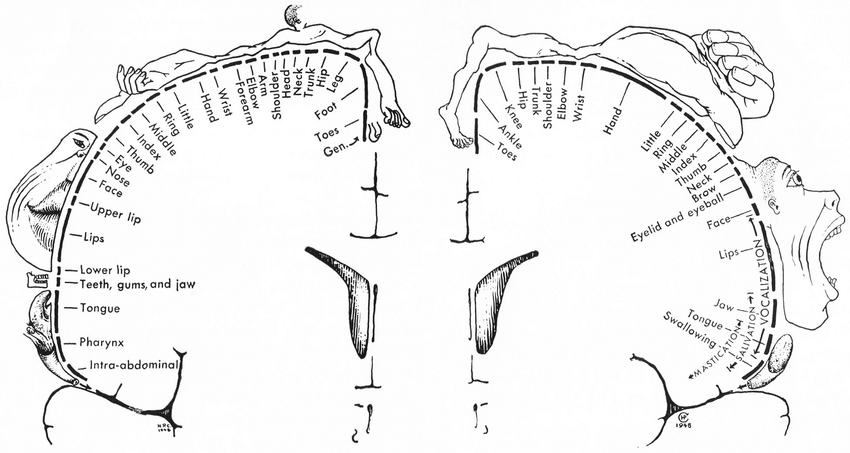
While Google search will show you hundreds of images where the “primary somatosensory cortex (S1)” occupies the entire postcentral gyrus, that area (which should be more correctly referred to as anterior parietal cortex, APC) consists of 4 parallel areas – 3a, 3b, 1, and 2 (in humans and monkeys), and each of these contains a separate map. The original Penfield’s map seems to be located in 3b.
- Areas 3b and 1 primarily receive information from the skin
- Area 3a receives primarily “proprioceptive” input – from muscles and joints
- Area 2 receives input from both the skin and from muscles and joints
Areas 3a and 3b seem to be lower in the processing hierarchy. Similar to visual processing, the pathways involved in tactile sense and proprioception can “extract features” from the raw input data received from the mechanoreceptors. Features such as object shape, texture, movement across the skin etc. It seems that areas 1 and 2 are involved in this higher-level feature processing. So both the skin/tactile and the proprioceptive information about joint position are used for higher-order processing which helps us to understand various properties of external objects in order to interact with them.
Although it is very interesting how skin deformation, joint position and muscle tension get transformed into a sensation of softness or hardness of a hand-held object, it seems like going farther back into the parietal cortex (areas 1, 2 and further) still does not answer the initial question – what about the sensations in the muscles?
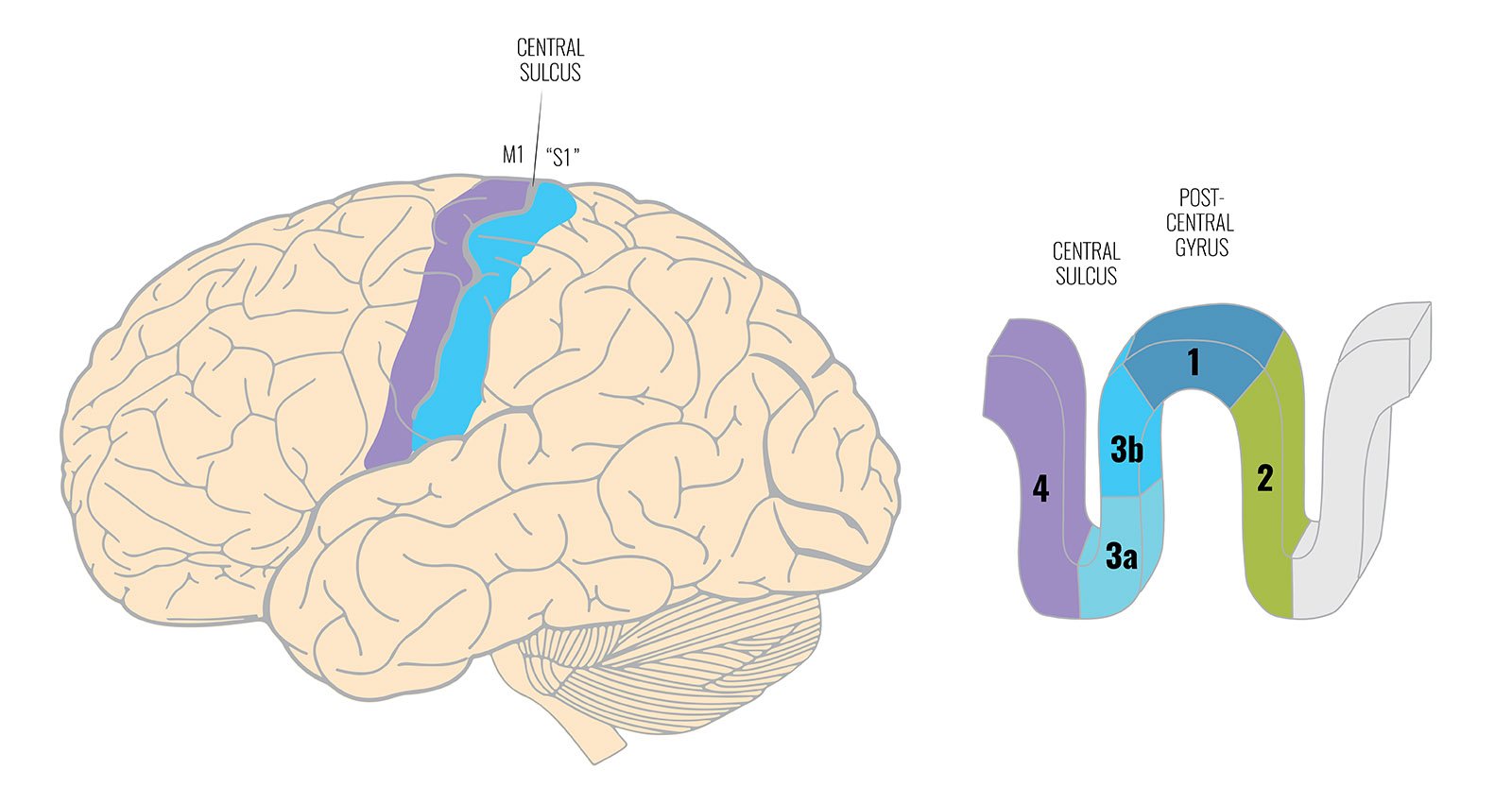
Basically, the only logical place left where we could put the muscle-associated sensations seems to be the area 3a. But, for example, if you read this excellent 60-page review (40 without references) of the APC, its connectivity and known functions, you will be faced with the dichotomy between the tactile skin-receptor based “sensations” (and their transformation into higher-order object/surface features) and proprioception, defined as the sense of joint position and movement. Area 3a is described as a proprioceptive area. And it’s an indisputable textbook truth that proprioception occurs without conscious localizable sensations…
Where can we go from here?
Try this:
Take two identical glasses, fill one with water at room temperature. Hold the glasses (one empty and one full with water) in the air at the same height and close your eyes. You should be able to immediately feel that the glass with water is heavier than the empty one. But if you pay attention to the sensations in your arms, you should also feel that you can sense more of “something” in the arm holding the heavier glass. I am actually not at all sure what the common word to refer to that sensation felt in an active muscle is, but we typically call it activation. This sensation is fuzzy but clearly localizable.
This sensation of activation is accompanying the assessment of the weight of our two glasses, but we don’t really need this conscious sensation to make judgements about object weight, do we? And when you start experimenting with objects of different weights, perhaps, with lighter objects you will not be able to register the difference in the amount of activation in your arm muscles at all.
Mechanoreceptors contribute to our ability to assess weight, texture and other physical properties of external objects. However, to be consciously aware that something I am holding is heavy is not the same as to be consciously aware of the sensations associated with mechanoreception.
Yet, the sensation of activation in the muscles when holding heavy objects is, I hope, an experience shared by most people.
So what are these sensations? Where do they come from?
Typically, when the topic of proprioception comes up, the discussion revolves around 2 types of mechanoreceptors: muscle spindles and Golgi tendon organs, which contribute the most to proprioception (defined as the ability of the brain to determine the position of the body parts).
- Muscle spindles are located in the muscles and provide information about the length of the muscle and the speed of change in the length of the muscle
- Golgi tendon organs (GTO) are located at the junction between the muscle and its tendon, and they provide information about the force generated by the actively contracted muscle.
Usually, a typical introductory discussion of the receptors stops here, but there are many other receptors within the musculoskeletal system:
Skeletal muscles contain:
- Muscle spindles
- Paciniform receptors
- Ruffini type receptors.
Little is known about their function in the muscle, but they are very similar to cutaneous (skin) receptors – (fast adapting) Paciniform corpuscles and (slow adapting) Ruffini end organs, which are sensitive, respectively, to high-frequency vibration/rapid contact and sustained tension/stretch.
Tendons contain:
- GTO
- Paciniform receptors
Joints and ligaments contain:
- Ruffini type receptors (similar to the cutaneous Ruffini end organs)
- Paciniform receptors (similar to the cutaneous Paciniform corpuscles)
- Golgi endings (similar to GTO)
And all these seem to project into the cortical area 3a.
We can speculate that there are 3 major candidates for possible origins of the sensations localizable in the muscles:
- Muscle spindles
- PRO: they are the most abundant receptors in the muscles.
- CON: the sensation of activation intensifies with tension, but muscle spindles are not sensitive to the change in tension.
- GTO
- PRO: GTO are sensitive to the change in muscle tension
- CON: GTO are localized at the junction between the muscle and its tendon, which is not where the sensation is subjectively experienced. But who knows, maybe there are some processing steps that somehow integrate the signals from different attachment points of the muscles.
- Ruffini type receptors
- PRO: the sensation of activation is subjectively similar to the pressure/tension in the skin. So slow-adapting Ruffini type receptors with their large receptive fields seem like a good candidate.
- CON: It seems like there are few of them, and not much is really known about them.
Of course it’s impossible to tell from subjective experience whether the conscious sensations in the muscles are associated with the muscle spindles, or Ruffini end organs, or something else, and which receptors give rise to the conscious sensations in joints and ligaments. But considering the neuroanatomical evidence in combination with everyday experience, at least it makes sense that the signals from some of these mechanoreceptors could contribute to the sensations in muscles and joints.
Strictly speaking, let’s say, if we equate proprioception (as the ability of the brain to determine the position of the body parts) with the function of muscle spindles and GTO, and at some point if it turns out that the sensation of activation in the muscles is associated with the Ruffini type receptors (or some other receptors), yes, perhaps then we could still say that “proprioception occurs without conscious sensation”. But then we still need to address the elephant in the room – all those conscious sensations in the muscles, tendons and joints.
Note: I am intentionally not mentioning anything related to Aδ and C afferents. But if you believe that deep pressure sensations associated with these fibers are a better candidate for sensations in active muscles, please email me.
To summarize this section:
- If there are any references to “conscious sensations in active muscles” (beyond those cases when “muscle tightness” is assessed as a sign of worry and distress) in the scientific literature, they are VERY difficult to find (I am not giving up though yet). Typically, they get lost between the “conscious tactile sensations” and “unconscious proprioception”.
- The most logical place for conscious sensations in the muscles is the area 3a (which receives major input from the “deep” receptors in the muscles, joints and ligaments)
- The conscious sensations in the muscles could be associated with muscle spindles, but they could also come from the slowly adapting Ruffini type receptors in the muscles, whose function is not clear at this moment.
Although the nature of the sensations in the muscles is unclear, the ability to sense and attend to (and correctly interpret) these sensations in the muscles, tendons and joints is what we call Proprioceptive awareness.
Proprioceptive Awareness and Injury Prevention
Let’s look at the importance of proprioceptive awareness for injury prevention.
For example, the joint receptors mostly only get activated at extreme loads. This means that if you do not feel anything in a joint, it gives you no information. However, if you sense something, like compression, in a joint, you can be quite sure that the joint is experiencing extreme loads. With repetition over extended periods of time, and without knowing how to reduce or relieve the compression in the joint, such loads may result in progressive cartilage damage.
This sensation of compression may easily go unnoticed since it does not in any way seem dangerous. It’s not painful. Some people specifically look for this sensation as they explore the range of motion because they have this mindset that if they cannot feel anything, they are not doing anything.
So, unfortunately, many people keep compressing their joints for years until the sensation of compression changes to pain. And at this stage, this becomes a chronic condition, and for many, not much can be done.
Because of this, in Baseworks, we use special cues to prompt people to pay attention to the sensations from the muscles and joints and to learn to understand the importance of these signals.
The conscious sensations in the active muscles are also very important as a feedback modality when learning how to engage the muscles to achieve deeper angles during stretching. Since this approach to stretching reduces joint compression common when using external forces (pushing or pulling to achieve deeper angles), this is also relevant to injury-prevention.
“If I cannot feel anything, I am not doing anything”
I just mentioned that it is a very common exercise mindset – looking for the strongest possible stimulation (heavier loads, faster pace, intense stretching). In fact, if you look at the verbal and visual language used in various materials promoting exercise activities, there’s a lot of references to sweating, feeling “the burn”, “the pump”, feeling exhilarated, endorphin release – which are all hallmarks of overstimulation.
There are many objective factors that give rise to and support this mindset:
- By overstimulating we may numb our senses and increase the thresholds of feeling anything at all. So each next time we need a bit more to feel at least the same as last time.
- Unless we consciously attend to something, we may not notice it all, even if it is there.
- Any form of perception is an active process, which requires skill formation. When we are born, the surrounding reality is a swirl of unstructured stimulation, and it is only through experience that we slowly build recognition categories which separate this meaningless stream of stimulation into meaningful details.
Because perception is, essentially, a skill that requires attention to salient details, if nobody ever brought our attention to the sensations in the muscles and joints, and if our interests, hobbies, jobs, and activities never required to pay attention to the sensations related to the musculoskeletal system, then, perhaps, it’s only natural that we do not feel very much.
Because we really don’t need conscious localizable sensations in our muscles to be able to track limb position when performing various motor skills or weighing hand-held objects, it almost seems natural that whatever scarce muscular sensations there might be, they will be filtered out from our conscious awareness.
I personally did not pay any attention or assigned any importance to these sensations until I was almost 30. And it was basically my involvement with Baseworks, which required regular practice according to the method, that started messing with my attention and sensory threshold settings, enhancing the sensitivity to these sensations in the muscles (proprioceptive awareness) and the sense of space (spatial awareness).
Currently, the experience of simply being in space and the sensations coming from the muscles constitute a large proportion of the ongoing flow of my sensory experience and are extremely entertaining and rewarding. Of course, sometimes I have doubts – maybe it really is the most natural thing that happens to everybody and has nothing to do with my training, but I don’t ever remember my grandmother, or mother, or anybody teaching me that as one hits their 30s, the body suddenly transforms and one begins to feel amazing and entertained all the time. And when I try to communicate to other people about my sensory and spatial experiences, there is often a lack of common vocabulary and seemingly no reference to shared experiences. To the point that when I am reading something about “dopamine hits” when scrolling through social media, I am almost wondering – really? How can those “hits” compete with the intrinsically rewarding sensation of simply sitting upright, or being aware of the trajectories of different body parts when walking? Why would anybody get “addicted” to something if there is a constant feed of ever more rewarding stimulation?
My personal opinion is that if the experience of simply being in space does not feel more rewarding than being on social media, one could definitely consider trying to improve their proprioceptive awareness.
How to develop proprioceptive awareness
Certain things are impossible for humans. For example, we cannot just develop our ability to see polarized light or to sense electromagnetic fields (as some animals do) because we do not have the receptors to register these stimuli even unconsciously.
But if there is a receptor, and if its sensory pathway somehow projects to the cortex, then you should be able to improve your conscious discrimination ability in that modality through the practice of consciously attending to the corresponding sensation, be it taste, or sound, or color, or a sensation in an active muscle.
Since the scientific research on “body awareness” at this moment is still mostly focused only on its “interoceptive” dimension, we can only speculate as to which approaches may eventually prove themselves to be the most effective.
The very notion of “proprioceptive awareness” in our framework arose in the process of trying to reverse-engineer the possible neuromuscular mechanisms of the effects of continuous application of Distributed Activation and Micromovements as well as to address the learning needs of people who can easily be identified by a teacher (in the absence of any definitions or frameworks) as those with “low body awareness”.
So, in Baseworks, we use patterns of isometric contractions (which create what we call the Distributed Activation) combined with Micromovements and very specific guidelines for movement goal setting and attention allocation, which altogether increase the amount of sensory information which is sent to the brain and can be attended to. So we could say that Baseworks practice is specifically designed with developing proprioceptive awareness in mind.
If we were to extend these ideas beyond Baseworks, because many sensations in the muscles appear only when they are activated, simply sitting and somehow focusing on an inactive muscle won’t be very effective. In fact, prolonged stillness is not an effective strategy, because with stillness the sensory flow ceases. The “body scan” kind of practices during meditation and stillness are not “targeting” proprioceptive awareness – it’s almost a step in the opposite direction. So it really makes a lot of sense that the topic of proprioceptive awareness has been a blind spot in the “mindfulness” and “body awareness” research.
So, basically, in order to develop proprioceptive awareness, you need to make a habit of consciously attending to any sensations in the active muscles during any type of activity. And it will be much easier to start by doing this with slower movements.
Let us know about your sensory experience!
As the topic of muscle-localized sensations is so non-existent, we want to know more about it! You could help us by filling out the form below! Let us know about your muscle-localized sensations!
If we learn something interesting, we will publish a follow-up!
[wp_applaud]



